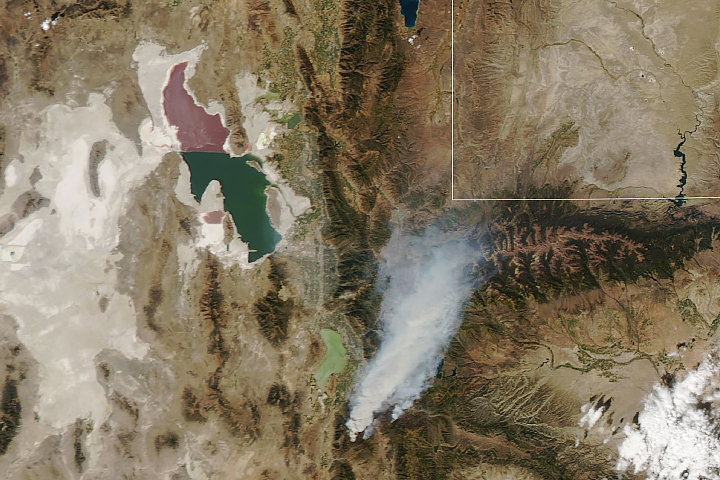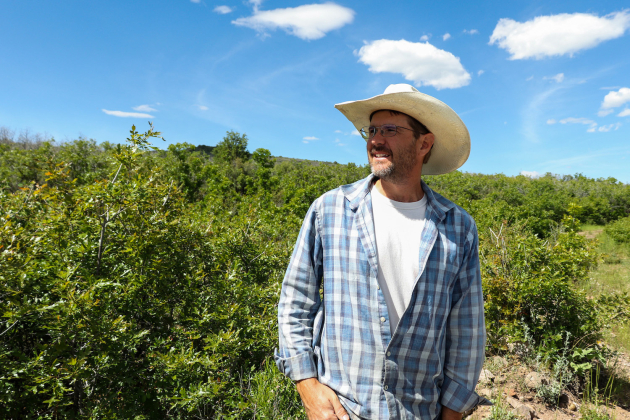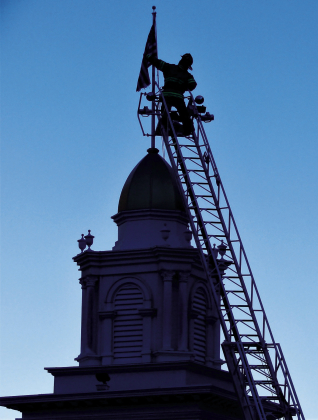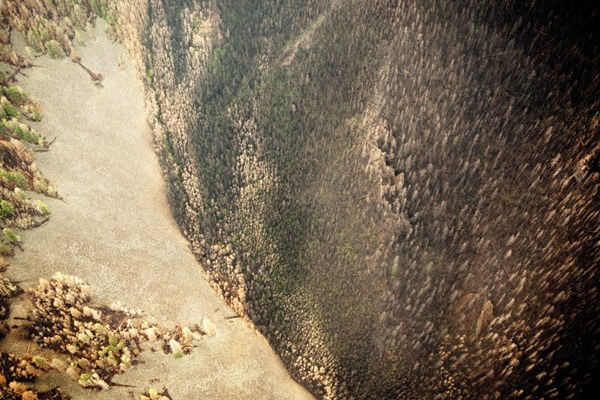Fire Burns East of Baldy Mountain: Exploring the Impact and Insights
Fire has the astonishing power to transform landscapes, leaving behind both devastation and opportunity. In the remote region of New Mexico’s Gila National Forest, an unprecedented blaze known as the Whitewater-Baldy Fire raged through the wilderness, affecting not only the flora and fauna but also capturing the attention of scientists. This article delves into the story of this massive wildfire and the valuable insights it yielded, shedding light on the intricate relationship between fire, climate change, and the future of our forests.
The Gila National Forest: A Unique Setting for Wildfire Research

The Gila National Forest, with its diverse ecosystems and vast stretches of wilderness, provides an ideal backdrop for studying wildfire’s impact. Ponderosa pines with blackened bark at their bases, grassy expanses devoid of trees due to frequent burns, and charred crowns on spruce and fir trunks tell stories of past blazes. It is within this forest that the Whitewater-Baldy Fire, the largest wildfire in New Mexico’s history, unfolded, offering an exceptional opportunity for scientific exploration.
Uncovering the Origins of the Whitewater-Baldy Fire
In the wake of two winters marked by scant snowfall, the Gila National Forest faced exceptionally dry conditions. Spring temperatures soaring nearly three degrees Fahrenheit above the century-long average exacerbated the situation. In late May, a smoldering burn below Mogollon Baldy Peak was ignited by lightning. Shortly thereafter, another fire erupted below Whitewater Baldy Mountain. These two separate fires eventually merged and, fueled by strong winds, evolved into a colossal inferno.
The Devastation and Ecological Impact
Over the course of two months, the Whitewater-Baldy Fire ravaged a staggering 297,845 acres, consuming 12 cabins and eight outbuildings. While many viewed this fire as a disaster, scientists recognized the unique opportunity it presented. The blaze acted as a massive laboratory, allowing researchers to study the long-term effects of more frequent fires on forest ecosystems, and examine whether fires can restore forests to their evolutionary norm.
Insights from the Whitewater-Baldy Fire

Scientists closely examined the Whitewater-Baldy Fire’s aftermath to understand its behavior and impact. Their findings revealed that the fire burned less severely compared to recent significant fires in the Southwest. The reduced severity was primarily attributed to the availability of less fuel. Notably, the fire played a crucial role in cleaning up undergrowth and eliminating smaller trees, enhancing the resilience of the forest against future high-intensity blazes.
The Challenges of Climate Change
Despite the positive outcomes observed in the wake of the Whitewater-Baldy Fire, looming challenges threaten to undermine decades of restoration efforts in the Gila National Forest. Climate change, characterized by rising temperatures, increased aridity, pine beetle outbreaks, and a higher frequency of severe wildfires, poses significant impediments to forest regeneration.
Convergence of Disturbances
As climate change progresses, multiple disturbances are anticipated to converge in the Gila. Beetle and drought stress, coupled with severe fires, will lead to the mortality of adult tree seed sources. The critical question remains: Can seedlings successfully grow and survive under such conditions? Craig Allen, a research ecologist for the U.S. Geological Survey, raises this concern, highlighting the complex challenges faced by forest ecosystems under the changing climate.
The Gila Wilderness: A Haven for Fire Management Innovation

The Gila Wilderness, encompassing a portion of the Gila National Forest, enjoys the distinction of being the nation’s oldest wilderness area. The surrounding towns’ small populations and the dedication of forest officials have facilitated a progressive approach to fire management.
A Fire-Adapted Culture
Recognizing the importance of fire for maintaining a healthy and balanced forest ecosystem, Gila fire managers developed one of the nation’s first forest-wide fire plans in the 1970s. This plan emphasized managing small wildfires for their ecological benefits rather than immediately extinguishing them. Over the following decades, a culture rooted in the understanding and manipulation of fire permeated the ranks of Gila’s firefighters.
Striking a Balance
While fire managers at Gila have been at the forefront of embracing the ecological role of fire, they face pressures to suppress wildfires. Recent directives, including the suppression of all fire starts, illustrate the delicate balance between promoting ecosystem health and mitigating the risk of costly and destructive fires. Gila’s fire management successfully suppresses 98 percent of lightning-caused fires on average, slightly above the national average of 99 percent.
Conclusion

The Whitewater-Baldy Fire serves as a captivating example, showcasing the complexity and crucial role of fire in shaping our forests. While the blaze wreaked havoc on its path, it also provided scientists with invaluable insights into the resilience and adaptive capabilities of forest ecosystems. However, climate change poses formidable obstacles, threatening to disrupt the delicate balance between fire, regeneration, and survival. It is imperative that we continue studying and implementing innovative fire management strategies to safeguard our forests for generations to come.
Frequently Asked Questions

1. Are wildfires necessary for forest health?
Yes, wildfires play a vital role in maintaining healthy forest ecosystems. They help remove excessive fuel, promote seed germination, stimulate new growth, and recycle nutrients.
2. How do forests recover after a severe wildfire?
Forest recovery after a severe wildfire involves a complex process. Natural regeneration through seed dispersal, growth of new vegetation, recruitment of young trees, and ecological succession gradually restore the forest’s ecological balance.
3. Can fire management practices mitigate the impact of climate change on wildfires?
While fire management practices can influence fire behavior to some extent, they cannot completely mitigate the impact of climate change on wildfires. Addressing climate change comprehensively through emissions reduction and adaptive strategies is crucial to minimizing wildfire risks.
4. How can individuals contribute to wildfire prevention?
Individuals can contribute to wildfire prevention by practicing responsible fire safety measures in fire-prone areas, creating defensible spaces around homes, and supporting forest management initiatives that prioritize ecological restoration and reducing fire fuel loads.
5. What role does public awareness and education play in managing wildfires?
Public awareness and education are essential components of effective wildfire management. By promoting understanding of fire ecology, fostering responsible behavior during fire seasons, and emphasizing the importance of ecosystem health, communities can actively contribute to mitigating the risks posed by wildfires.



Add Comment